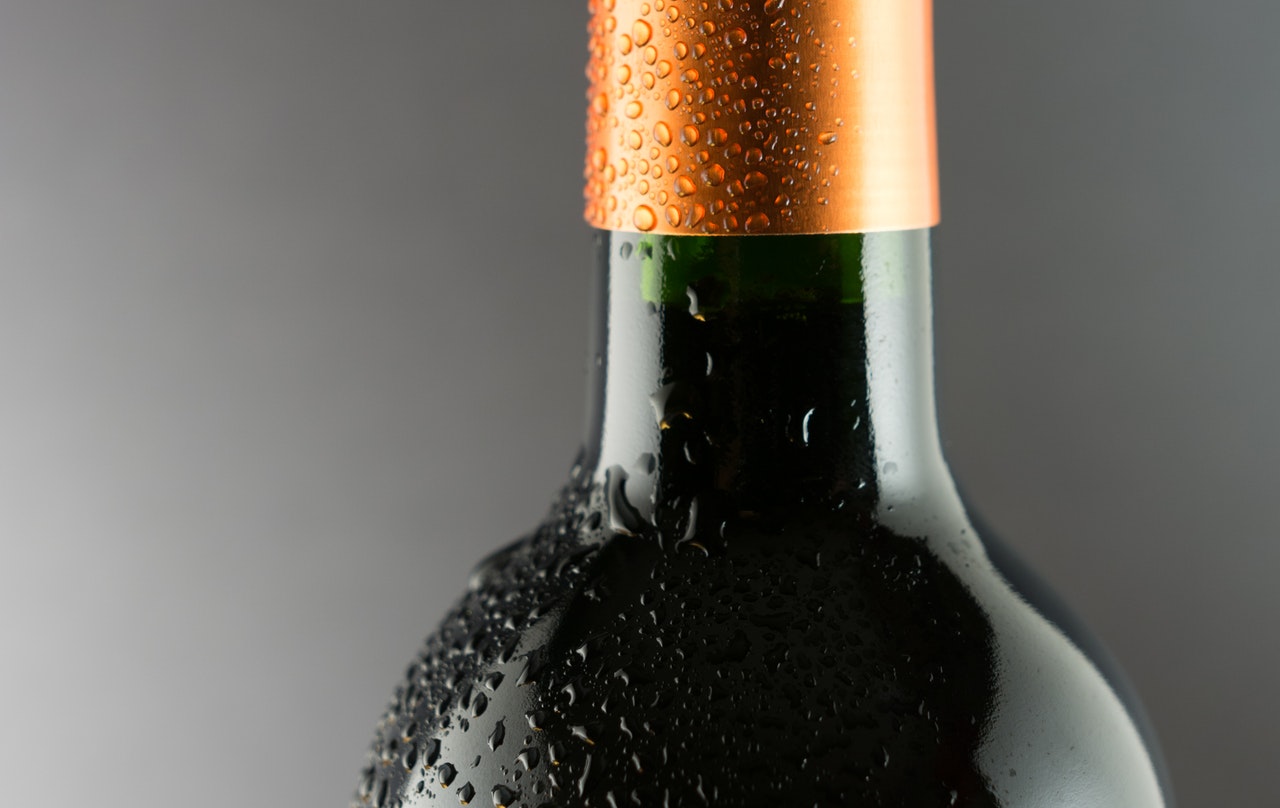Even though wine storage is an ancient art, it's not a mysterious one. And not a terribly complicated one, either. Wine lasts longer and tastes better when stored in an environment that mimics a wine cellar. Mystery solved.
But, if you've ever flipped through a magazine or watched a home renovation on one of the many popular makeover shows, you may be thinking that there are multiple ways to store wine. In fact, some designers turn wine into an accessory and use bottles for artistic expression, completely ignoring wine's practical needs. However, if you're collecting wine with the hopes of one day consuming it, you need to be very careful with how you store your wine.
In this post, we’re exploring some of the most common wine storage myths to hopefully rescue you from inadvertently destroying your wine collection. Let’s not waste another second and jump right into it.
Myth #9: You Can Store Wine Above Your Kitchen Refrigerator
The top of the refrigerator is one of the most awkward spaces in every home. For that reason, it usually goes unused and collects dust. This makes it the perfect place to store wine that you won't be touching for a while, right?
Wrong.
While it does make sense to put that empty space to use, your wine collection is not the right fit. The top of your kitchen refrigerator is probably one of the worst places to put your wine — and not because it’s dusty up there.
The first reason you shouldn’t store your wine above your fridge is because of the heat factor. Kitchen refrigerators can emit a lot of heat. This heat can prematurely cook your wine.
The second reason above-fridge storage is a no-no has to do with vibration. Even the most unassuming refrigerator vibrates during the cooling process. It moves even more when making ice. And that’s without human interaction. Think of how many times you or others in your household may open and close the refrigerator doors during the course of a day. That constant movement can initiate a chemical reaction in the wine, which can then negatively affect the taste.
To avoid prematurely aging your wine, find a different storage spot for your collection that’s not on or near any vibrating application, including a fridge, dishwasher, washer, or dryer. Even plugin appliances like vacuums can permanently disrupt your wine.

Myth #8: Storage Temperature Doesn't Matter
There's a pervasive myth that says red wines, in particular, should be served at room temperature. This is only true if your ambient room temperature stays between 50°F to 60°F (or 10°C to 15°C).
Brrrr.
That's pretty cool, considering that standard room temperature is usually between 68°F to 72°F (or 20–22 °C).
The truth is that wine should be stored in a cool environment. How cool depends on the type of wine you’re storing. Reds can be stored at a slightly warmer temperature than whites.
Reds such as Merlot and Cabernet Sauvignon can be stored at 60°F (15°C). Whites like Chardonnay or Pinot Gris can be stored at 50°F (10°C). Then there are champagne wines, which are ideal at a bone-chilling 45°F (7°C).
What if you're storing whites, reds, and champagnes together? Choose somewhere between 55°F to 60°F (or 12°C to 15°C) to keep all of your wines happy.
Myth #7: There's No Such Thing As Too Cold
Because wine is stored in glass bottles, you definitely don’t want to store your wine at a freezing point. This can cause the wine to freeze, which can then crack and maybe even break the bottle. Also, if it doesn’t crack the bottle, the frozen liquid can push against the cork and cause it to pop open.
This is one of the biggest reasons you should avoid storing your wine in kitchen refrigerators. We’ll explain more a little later on in this post.
Myth #6: You Can Store Wine in a Glass Room
We’ve all seen beautifully designed glass wine walls, closets, or even entire rooms. It looks cool to see rows of bottles lined up in an aesthetic pattern. These rooms may even have strips of LED lighting to highlight the design.
The only problem with this glass setup is that wine fares much better when stored in darkness. This is why wine bottles themselves are tinted green or amber. The goal is to reduce exposure to sunlight.
Sunlight is a natural enemy to wine. The ultraviolet (UV) rays of the sun can chemically alter your wine and change its aroma and taste forever. So, while an all-glass wine cellar looks great, it can also expose your wine to harmful UV rays.
Additionally, glass rooms are difficult to keep cool. You may be expending a lot more energy than you’d like to maintain the ideal 55°F to 60°F ambient temperature in your storage room if you opt for glass walls.
Myth #5: You Can Store All Wines in the Upright Position
There’s a reason why you often see wine bottles stored on their sides. It’s for practical purposes.
While this doesn’t apply to all wine, it does matter how you store corked wine. In order to preserve freshness, corked wine should be stored on its side. This allows the liquid to maintain contact with the cork.
Why is this necessary?
If the cork dries out, it can allow air to seep into the bottle. Air oxidizes the wine and causes it to age rapidly. It will first turn into vinegar. It’s still okay to drink, but not pleasant. And this process can happen in as little as two days after exposure.
You can avoid this unnecessary consequence by storing your bottles on their sides using either metal wine racks for a more modern take on wine storage or wood wine racks for a familiar, traditional feel.
Myth #4: Corks Are Better Than Screw Caps
Let's settle the debate once and for all. Screw caps are not inferior to corks. Corks have just been around longer. When it comes to preservation, both corks and screw caps are equal. But in terms of affordability, screw caps tend to win the prize. This is why you often see screw caps on less expensive wines. But a lot of producers are considering this alternative because they perform just as well as corks. And keep in mind that not all corks are 100% natural cork. Some are manufactured with partial cork and other mystery ingredients that give off the appearance of cork. In this case, you’re better off without a cork.

Myth #3: A Kitchen Refrigerator Can Store Wine Just as Easily as a Wine Fridge
The standard kitchen refrigerator is not suitable for wine storage. At first glance, it sounds counterintuitive. After all, you need to keep your wine cool and a fridge does that perfectly. However, there are several reasons why kitchen fridges aren’t good for wine storage.
First, kitchen fridges are too cold for long-term wine storage. The standard fridge maintains a temperature of 40°F (4°C). This is far below the ideal storage temperature for even champagne.
Second, kitchen fridges do not provide the right humidity level for corked wine bottles. If you’re storing bottles with corked tops, you need to store them in a humid environment (around 70%) to prevent cork shrivel.
Third, kitchen fridges vibrate during their cooling cycles. As mentioned above, any vibration can disrupt the wine and permanently alter the flavor and aroma of the liquid.
For these reasons, a standard kitchen refrigerator simply won’t do. But, you can opt for a free-standing or built-in wine fridge, if you are unable or don’t want to build a cellar in your home.
Myth #2: You Need a Dedicated Wine Cellar for Storing Wine
If you don’t have a basement or a dedicated space for a wine cellar, can you store wine? Absolutely. As we documented in this article on unique places to put a wine cellar in your home, there are possibly dozens of spaces around your home for wine storage. These spaces include under the stairs or in an unused guest room.
Just keep in mind that your wine should be stored at a proper temperature to maintain its taste and aroma. If you don’t have a separate cellar, you can effectively do this by investing in a wine cooler like one of these.
Myth #1: All Wine Can Be Aged
Not all wine is meant to be aged for years or decades. Most wine that you purchase is meant to be consumed within 24 months of purchase. Only a few, rare wines taste better when aged beyond a decade.
It may be contrary to popular belief, but aged wine is not always better. Some young wines may taste better to your palate than older ones.
When storing wine, keep in mind that your collection will need to be rotated frequently to ensure that nothing expires on the rack.
Final Thoughts
While wine storage isn’t complicated, it does require a few considerations, specifically choosing the right temperature, avoiding light, and ensuring a still environment. By carefully following these practices, you’ll ensure that your wine remains delicious until you’re ready to consume.
Contact us today to learn more about wine cellars.


